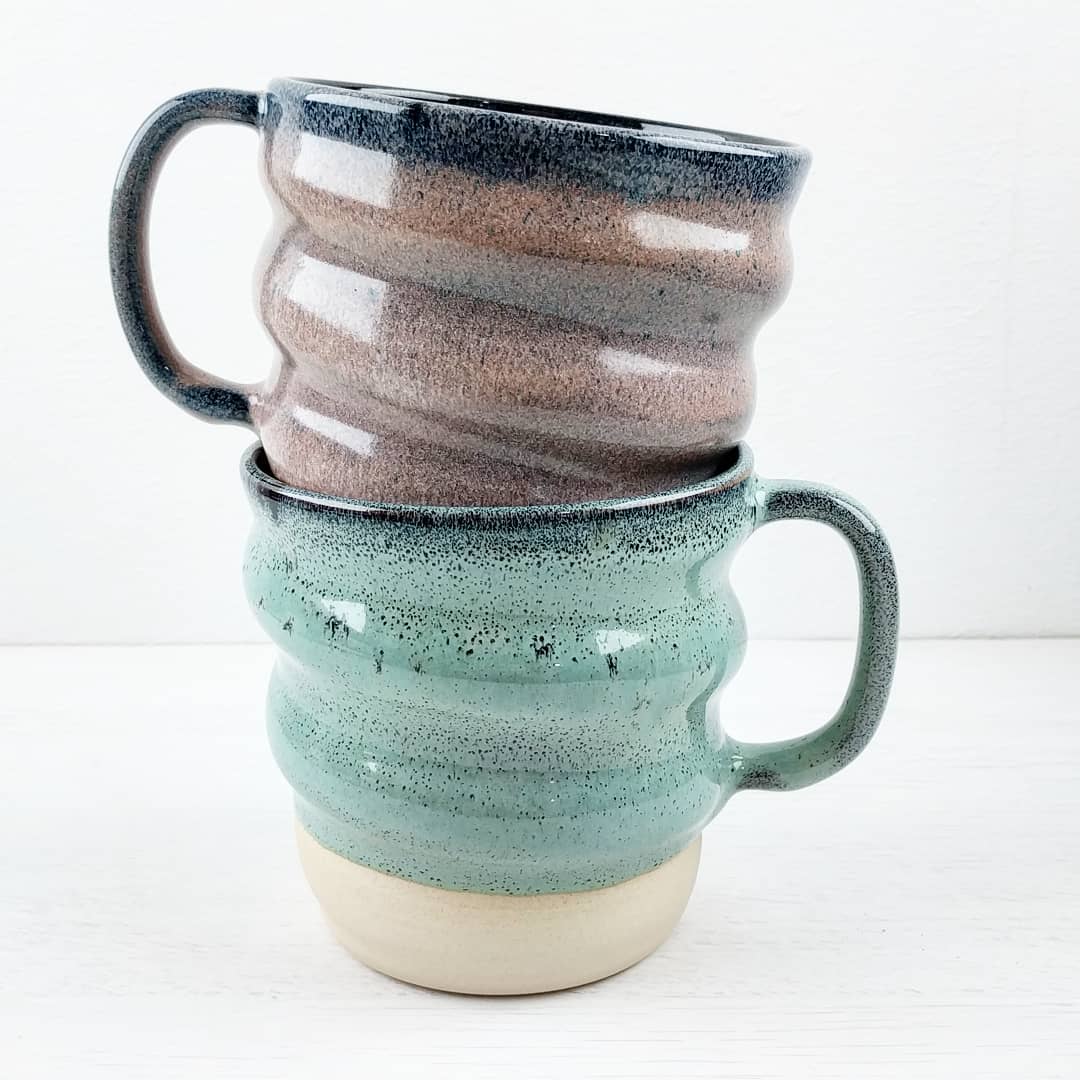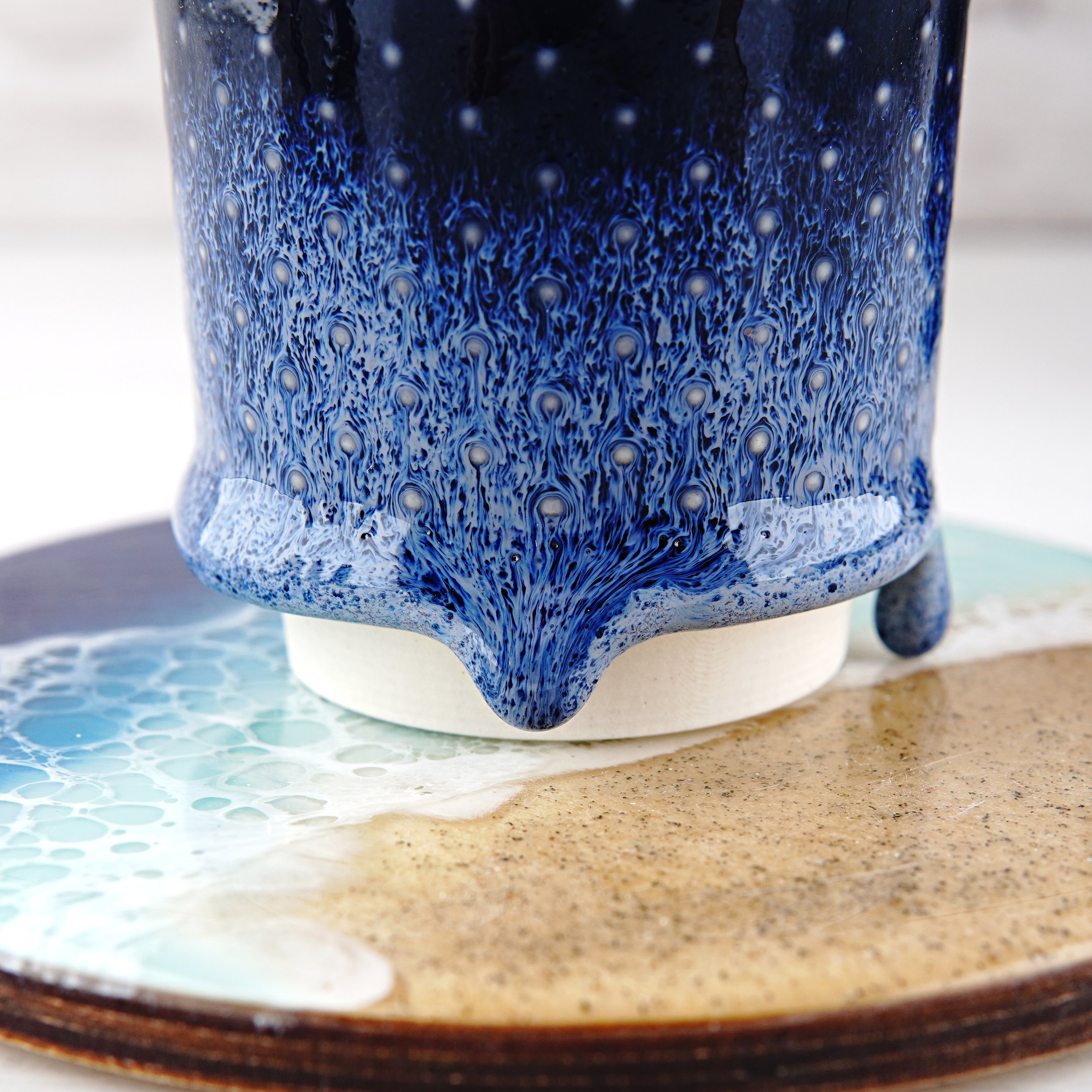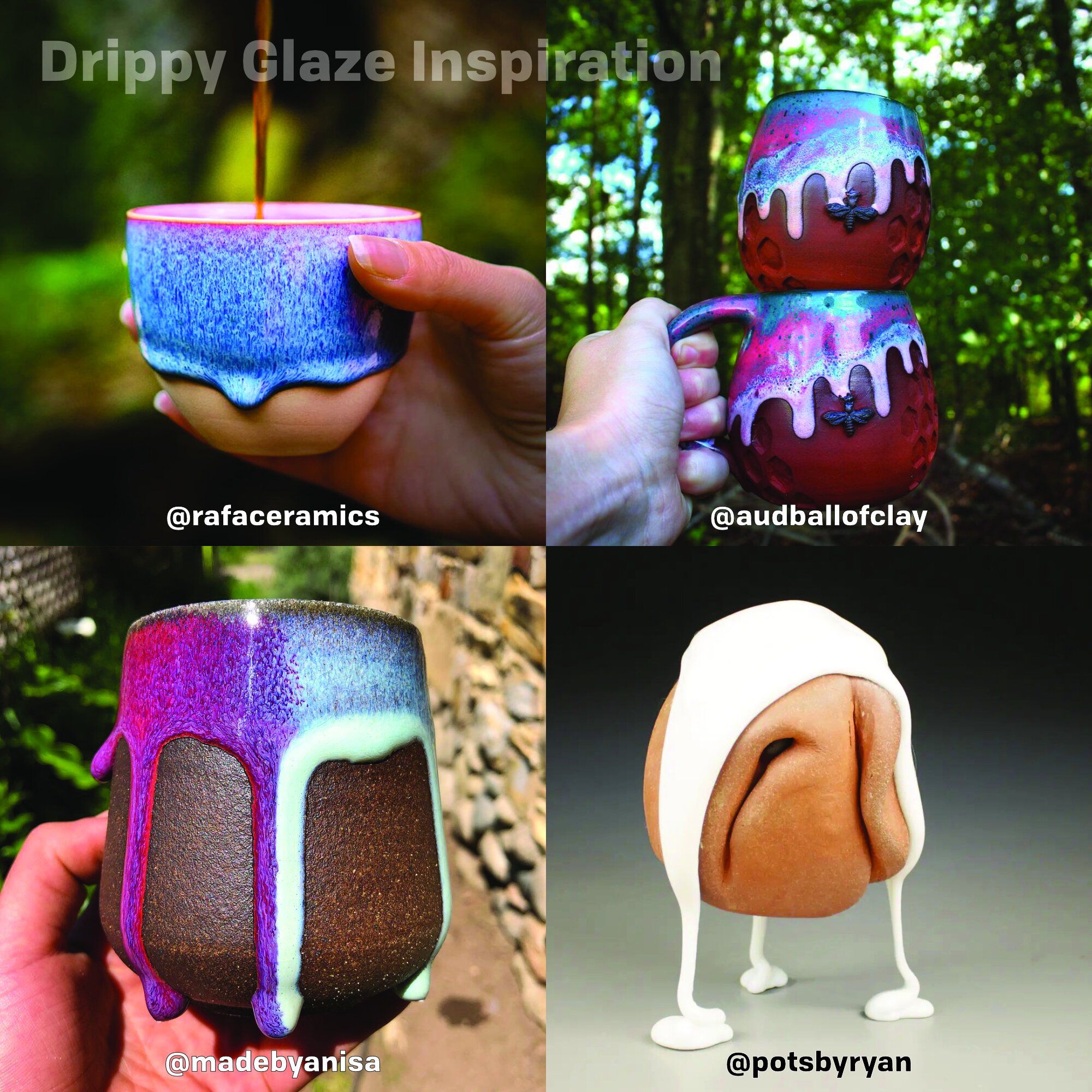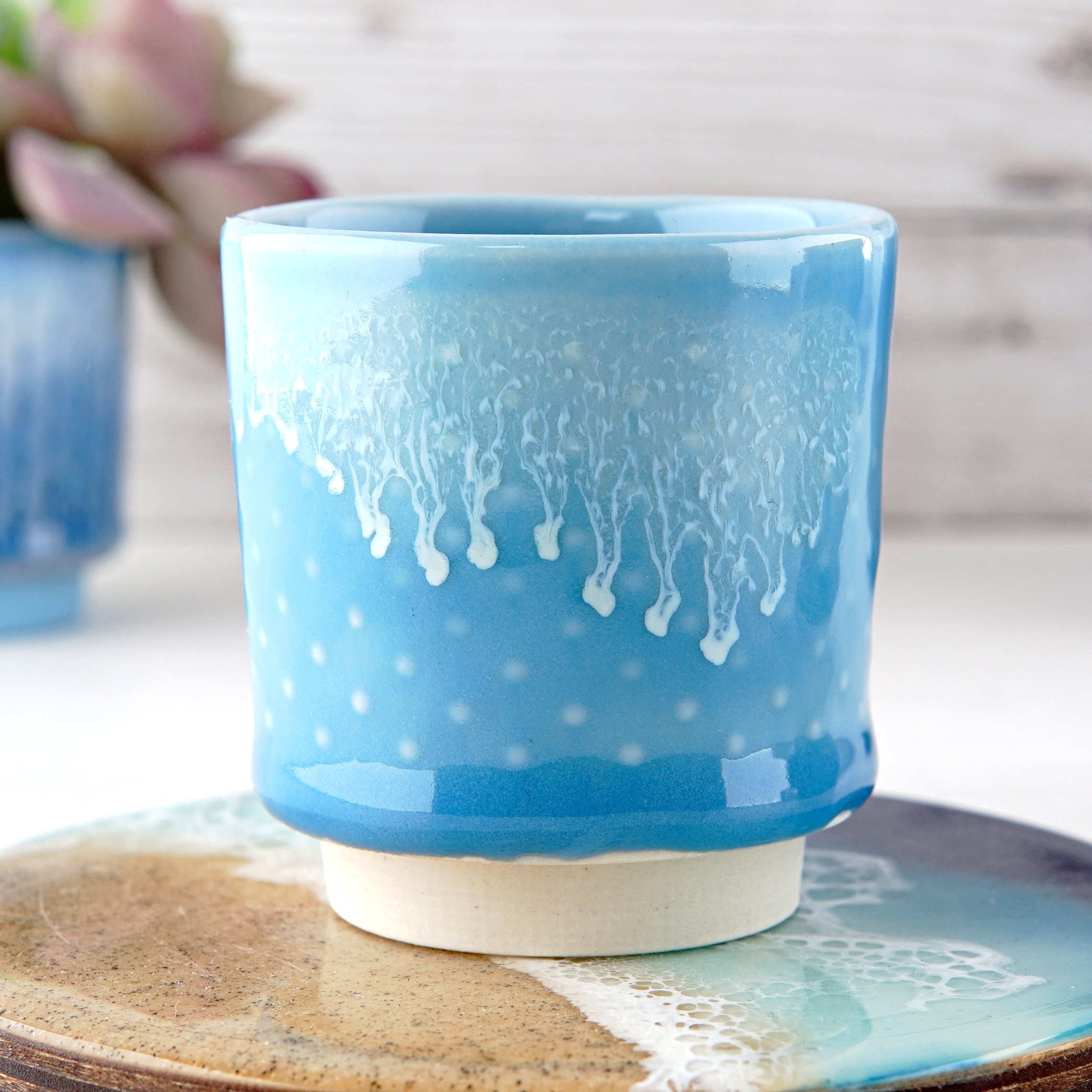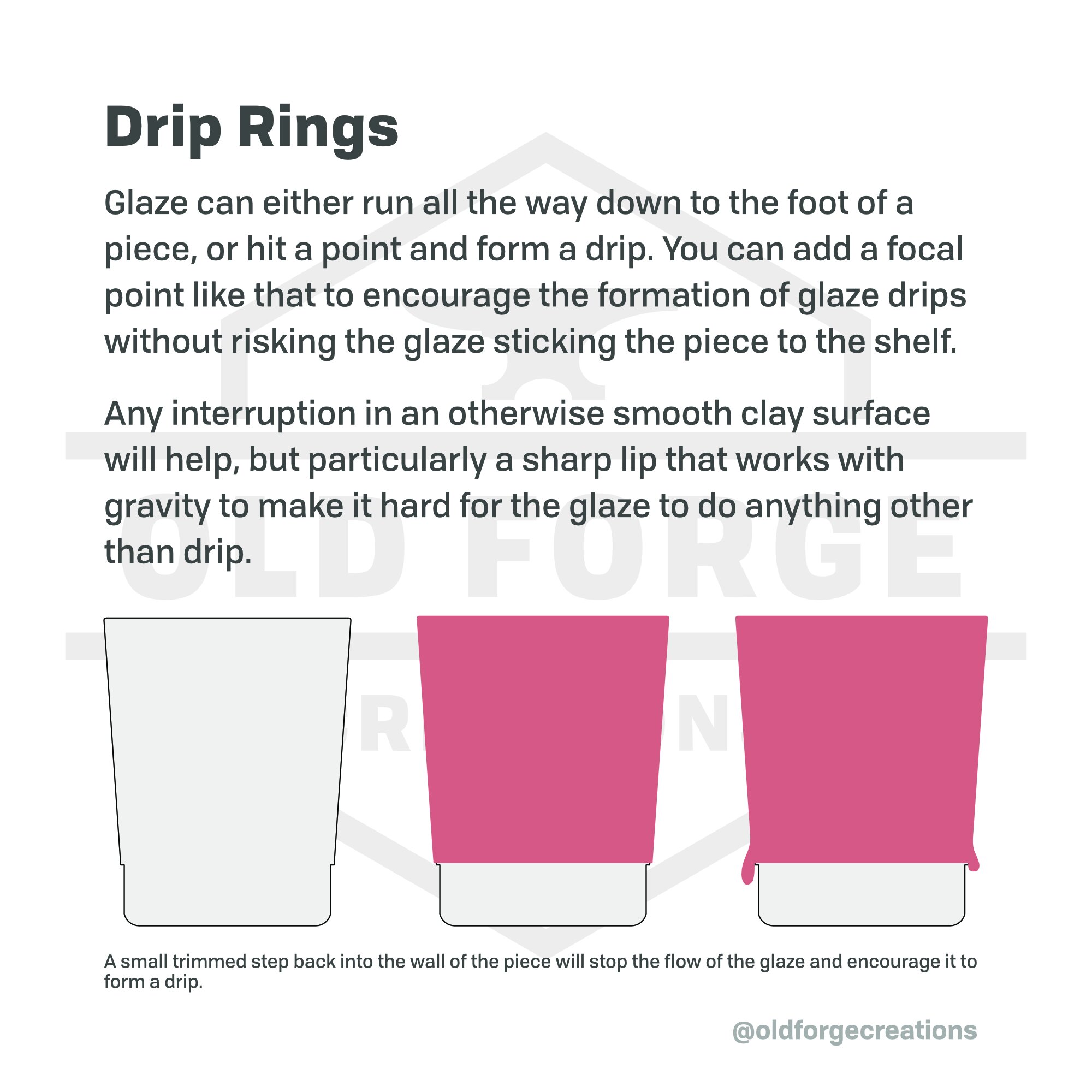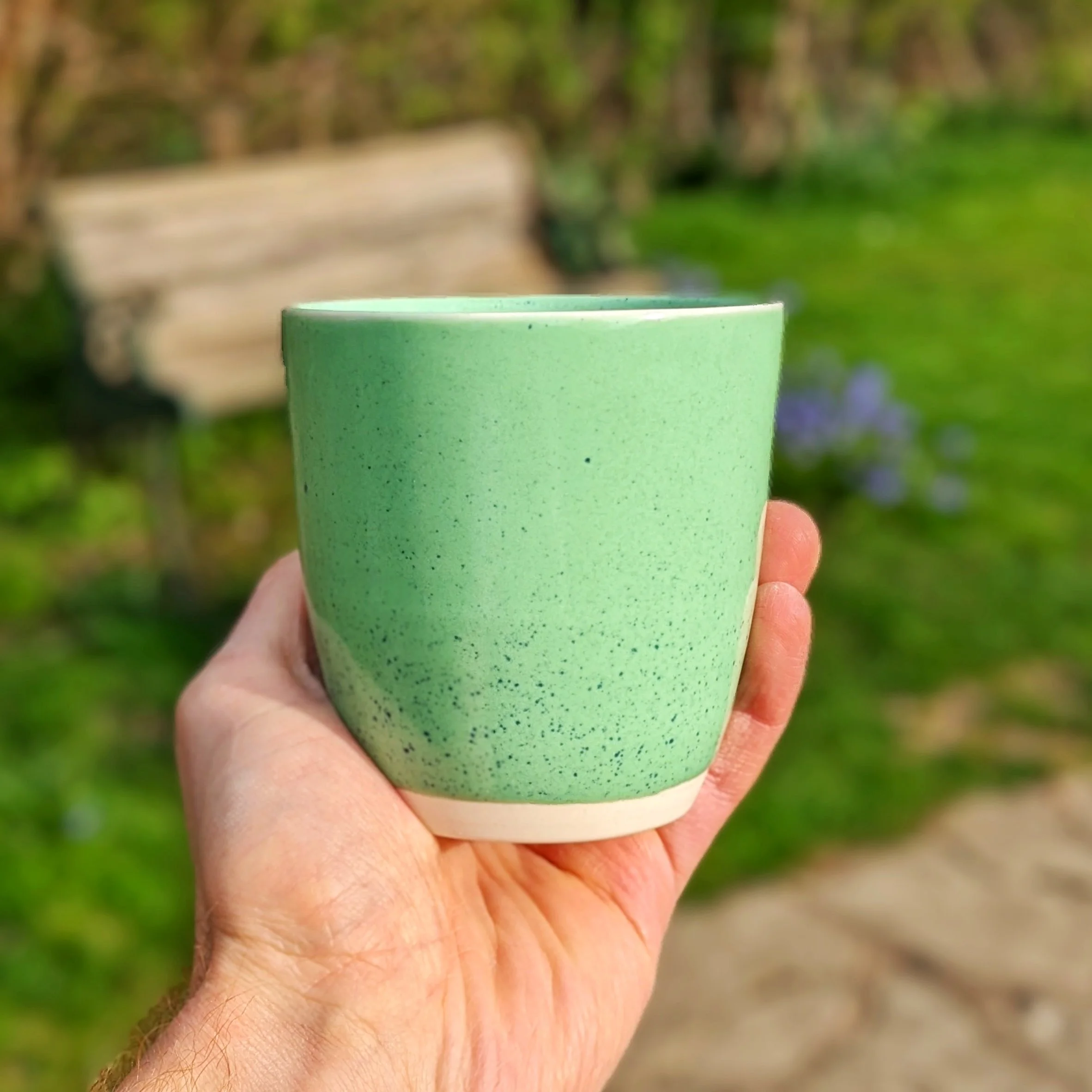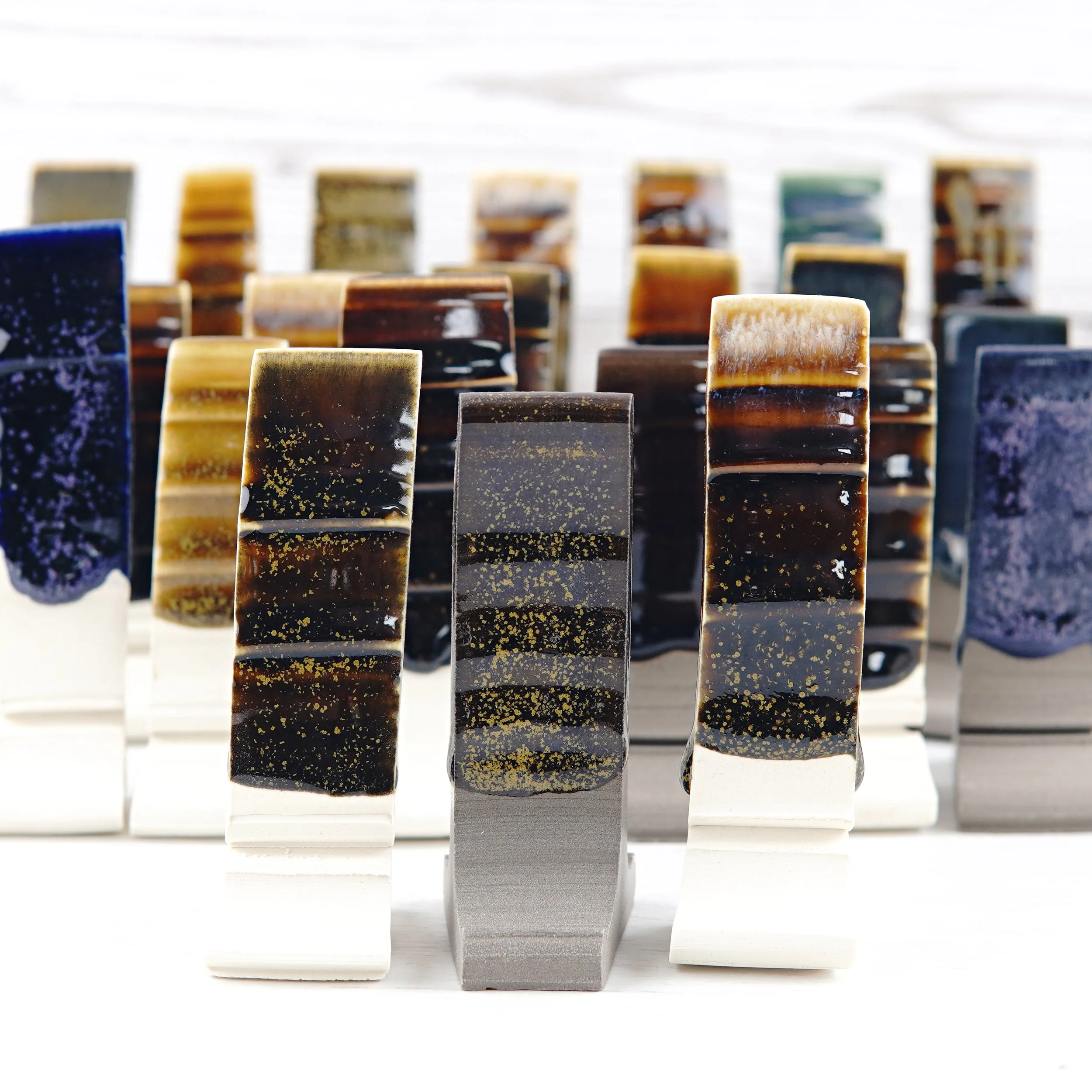How To Get Drippy Glazes
Gloopy or Runny
When people talk about ‘drippy’ glazes, it generally falls into one of two extremes. One option is the thick gloop style glazes that have the viscosity to form thick beads without flowing. The other is the kind of glazes that run all the way down the side of a piece.
Most glazes can form drips though, given the right application, firing, and form.
Gloopy
Gloopy glazes are essentially normal glazes with more silica and alumina to make them less fluid. At the full Gloopy extreme they’re closer to clay than a glaze. There’s a balance with gloopy glazes and drips, as they can form thicker drips but will flow less in the firing so even more glaze needs to be added to make the most of it
Here is a recipe that should be able to function as a normal glossy glaze while also forming thick drips
Runny
Runny glazes generally have lower silica/alumina or have more boron, allowing them to melt and flow more than other glazes. Some fluid glazes are designed to be used on their own, and others are designed to encourage movement in other glazes by layering them.
Here is a recipe deigned to be combined with other glazes to increase the amount of movement.
Application
A huge part of glaze drippiness is the application. Glazes melt in the firing to become liquid. Each glaze will have its own viscosity (depending on chemistry and firing) but ultimately it can only move if there’s enough glaze.
To get drips, you have to apply the right amount of glaze and fire it to a temperature that suits the glaze and application. That is to say, you can add less glaze if you fire hotter or for longer.
Drips will happen naturally with the right glaze application, but can be controlled with variation in thickness or variation in the shape of the application.
It’s a balancing act to get all these variables right, but you can get a lot of control and predictibilty (if that’s what you want).
Drip Rings
Glaze can either run all the way down to the foot of a piece, or hit a point and form a drip. You can add a focal point like that to encourage the formation of glaze drips without risking the glaze sticking the piece to the shelf.
Any interruption in an otherwise smooth clay surface will help, but particularly a sharp lip that works with gravity to make it hard for the glaze to do anything other than drip.
Drip Catchers
If you are going to attempt drippy glazes, especially on kiln shelves in a shared studio, I would recommend putting the work on a sacrificial piece of clay.
It can be as basic as sitting a piece on a flat slab of clay, but I prefer to throw mine with a raised center and slight lip. This means the piece is slightly more protected against glaze runs and they’re easier to hold while loading the kiln.
If you like this sort of content and want to support the creation of more, I now have a Patreon specifically for it or a page on my website if you just want to make a single donation.
